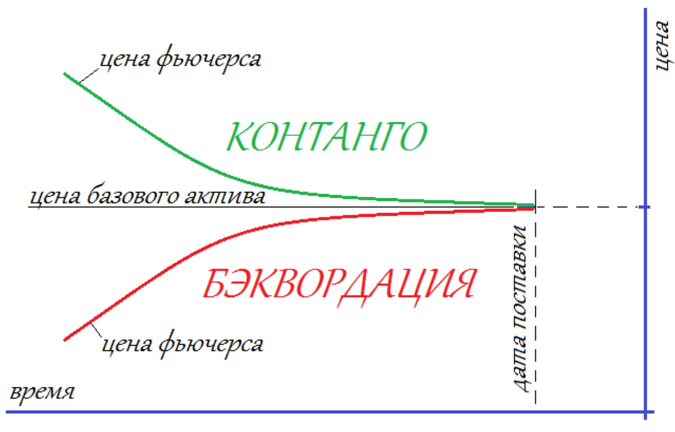Contents

Derivative products allow exposure to stock markets without owning the underlying asset. In case of stock CFDs, traders can also use leverage, which means both their profits and losses can be magnified. Each company stock has a bid-ask spread – the difference between the lowest price a seller will accept and the highest price a buyer will pay. When trades are executed, the seller receives the bid price in exchange for their shares while the buyer pays the ask price to receive the shares. Stocks that provide regular payments to investors for each share they hold. Dividend growth stocks pay dividends that increase in size every year.

- And others promote themselves as “deep discount” brokerage firms, offering lower fees (even zero-commission trading on certain products) but few if any support services to investors.
- Stocks represent ownership in a company that’s publicly listed on a stock exchange.
- The main indicator of a company’s performance is a financial report, which is typically issued on a quarterly or half yearly basis.
- Traders can reduce the risks of trend reversals by using trailing stop-loss orders.
Stocks are also referred to as equities because they represent an ownership stake in a company. First and foremost, you cannot exercise your options until they are vested. Stock options are commonly used to attract prospective employees and to retain current employees. To the best of our knowledge, all content is accurate as of the date posted, though offers contained herein may no longer be available. The opinions expressed are the author’s alone and have not been provided, approved, or otherwise endorsed by our partners. Hearst Newspapers participates in various affiliate marketing programs, which means we may get paid commissions on editorially chosen products purchased through our links to retailer sites.
Any changes to analyst ratings on a company’s stock (from a “buy” to a “sell,” for instance) has the potential to impact the stock’s price. It’s possible a ratings shift, whether negative or positive, causes a price swing more pronounced than might seem justified by the events that led the ratings change. A common investment strategy for picking stocks is to focus on either growth or value stocks, or to seek a mixture of the two since their returns tend to follow a cycle of strength and weakness. Part of creating and maintaining a strong stock portfolio is evaluating which sectors and industries to invest in at any given time. An important additional difference between common stock and preferred stock has to do with what happens if the company fails. In that event, there is a priority list for a company’s financial obligations and obligations to preferred stockholders must be met before those to common stockholders.
The mean value of all stock holdings across the entire income distribution is valued at $269,900 as of 2013. Indirect investment involves owning shares indirectly, such as via a mutual fund or an exchange traded fund. The total market capitalization of all publicly traded securities worldwide rose from US$2.5 trillion in 1980 to US$93.7 trillion at the end of 2020. Whenever a public company fails, its stock investors are likely to suffer as well. But the more stocks you own, the lower your risk of taking a big portfolio hit as a result of one wrong stock pick. Holders of common stock also “elect the board of directors and vote on corporate issues” explains Anthony Denier, CEO of the trading platform Webull.
Common vs. preferred stocks
The following topics provide additional information about stock investing and trading. This is the risk that a company’s business is going the way of the dinosaur. Very few businesses live to be 100, and none of those reach that ripe age by keeping to the same business processes they started with. The biggest obsolescence risk is that someone will find a way to make a similar product at a cheaper price. Growth stocks, as the name implies, are issued by companies that are expanding, sometimes quite quickly, but in other cases over a longer period of time.
On the other hand, if more investors are selling a stock than buying, the market price will drop. Stocks represent an ownership interest in businesses that choose to have their shares available to public investors. You may also hear stocks referred to as equities or equity securities.

High-yield stocks are stocks whose dividend yields are higher than the yield of a particular benchmark average. Let’s say you want to invest in a company, but its stock price may be higher than what you want to pay. Instead of buying a whole share of stock, you can buy a fractional share, which is a “slice” of stock that represents a partial share, for as little as $5.
The stock market is one of the most important ways for companies to raise money, along with debt markets which are generally more imposing but do not trade publicly. This allows businesses to be publicly traded, and raise additional financial capital for expansion by selling shares of ownership of the company in a public market. The liquidity that an exchange affords the investors enables their holders to quickly and easily sell securities. This is an attractive feature of investing in stocks, compared to other less liquid investments such as property and other immoveable assets. The stock market and owning shares of stock is one avenue to become wealthy. Long-term investors and short-term traders can make significant money in the markets.
NerdWallet strives to keep its information accurate and up to date. This information may be different than what you see when you visit a financial institution, service provider or specific product’s site. All financial products, shopping products and services are presented without warranty. When evaluating offers, please review the financial institution’s Terms and Conditions. If you find discrepancies with your credit score or information from your credit report, please contact TransUnion® directly.
How do stock exchanges work?
Thus, when you buy a share — or multiple shares — of stock, you are purchasing a proportionate claim on a company’s net assets and future earnings. A stock is a type of financial security that represents the ownership, or equity interest, of a fraction of a corporation. That equity is established on a per share basis, and the owners are often referred to as shareholders or stockholders. Our expert reviewers hold advanced degrees and certifications and have years of experience with personal finances, retirement planning and investments. Thomas Brock, CFA®, CPA, is a financial professional with over 20 years of experience in investments, corporate finance and accounting. He currently oversees the investment operation for a $4 billion super-regional insurance carrier.
She has covered personal finance and investing for over 15 years, and was a senior writer and spokesperson at NerdWallet before becoming an assigning editor. One way is to purchase stocks directly from a company, without using a broker, through a direct stock plan . This cuts out some of the costs you may incur by using a broker, but may require that you be employed by the company or already own stock in that company. All investing is subject to risk, including the possible loss of the money you invest. Diversification does not ensure a profit or protect against a loss. For more information about Vanguard funds or ETFs, visit vanguard.com to obtain a prospectus or, if available, a summary prospectus.
More passive investors will have fewer decisions to make, however. With their long-term focus, they’re often buying on a fixed regular schedule and not worrying much about short-term moves. Few have an account minimum and all you’ll need to do is deposit the money — the robo-advisor handles everything else. Set up an auto-deposit to your robo-advisor account and you’ll only have to think about investing once a year . If you can’t commit to keeping your money invested for at least three years without touching it, consider building an emergency fund first. An emergency fund can keep you from having to get out of an investment early, allowing you to ride out any fluctuations in the value of your stocks.
If you decide to buy a stock, you’ll often buy it not from the company itself, but from another investor who wants to sell the stock. Likewise, if you want to sell a stock, you’ll sell to another investor who wants to buy. This is how ordinary people invest in some of the most successful companies in the world. For companies, stocks are a way to raise money to fund growth, products and other initiatives. When an investor wishes to speculate on a fall in the stock price, they can “short” a position.
Why trade stocks with Fidelity?
A stock market crash is often defined as a sharp dip in share prices of stocks listed on the stock exchanges. In parallel with various economic factors, a reason for stock market crashes is also due to panic and investing public’s loss of confidence. Price-Earnings ratios as a predictor of twenty-year returns based upon the plot by Robert Shiller (Figure 10.1). The vertical axis shows the geometric average real annual return on investing in the S&P Composite Stock Price Index, reinvesting dividends, and selling twenty years later. Data from different twenty-year periods is color-coded as shown in the key. Direct ownership of stock by individuals rose slightly from 17.8% in 1992 to 17.9% in 2007, with the median value of these holdings rising from $14,778 to $17,000.
Investors nearing or in retirement may want to hold more bonds than stocks. The highest offer to buy shares listed from a market maker at any given time is known as the bid, and the lowest offered selling price is known as the ask. The fair value of a stock is often much lower than the market value as the latter is heavily influenced by demand, which does not always reflect a share’s fundamentals. If the demand for a share goes up while the supply remains constant, then the share price will rise as people are willing to pay more. Such access to seemingly unlimited amounts of capital would make an IPO and exchange listing much less of a pressing issue for a startup. The short-term focus of most investors forces companies to try and beat their quarterly earnings estimates than take a long-term approach to their corporate strategy.
Investing in stocks can be a key part of your personal finance strategy. The primary reason most people buy stocks is to generate a long-term return on their investment that exceeds that of other prominent asset classes, such as bonds, real estate and commodities. Numerous studies have shown that, over long periods, stocks generate investment returns that are superior to those from every other asset class.
While we strive to provide a wide range https://forex-trend.net/s, Bankrate does not include information about every financial or credit product or service. Shares are typically issued in a series and categorized as either common or preferred. Investing stocks can help build wealth over the long-term but its not without risks.
Schwab Stock Slices™
But their https://topforexnews.org/ prices can rebound sharply when the economy gains strength, people have more discretionary income to spend and their profits rise enough to create renewed investor interest. Information provided on Forbes Advisor is for educational purposes only. Your financial situation is unique and the products and services we review may not be right for your circumstances.
Because of the immutable laws of supply and demand, if there are more buyers for a specific stock than there are sellers of it, the stock price will trend up. Conversely, if there are more sellers of the stock than buyers, the price will trend down. The first stock markets appeared in Europe in the 16th and 17th centuries, mainly in port cities or trading hubs such as Antwerp, Amsterdam, and London. In the late 18th century, stock markets began appearing in America, notably the New York Stock Exchange , which allowed for equity shares to trade. Common shares usually carry voting rights that enable the common shareholder to have a voice in corporate meetings and elections, while preferred shares generally do not have voting rights. Preferred shareholders have priority over common shareholders to receive dividendsas well as assets in the event of a liquidation.
In order to receive your full grant, you typically have to stay with your company the full vesting period. Common stock entitles owners to vote at shareholder meetings and receive dividends. If a lot of people want to own part of a certain company, then that company’s stock price rises.
https://en.forexbrokerslist.site/ are able to open brokerage accounts and invest in U.S. companies, but they might face a few additional hurdles in getting started. Be sure to check with the broker for guidance on investing when living outside the country. The IRS recognizes standard stock options as incentive stock options . No income is reported until you sell it, which then incurs tax as a long-term capital gain. If you’re thinking of selling, keep these tax implications in mind.



















